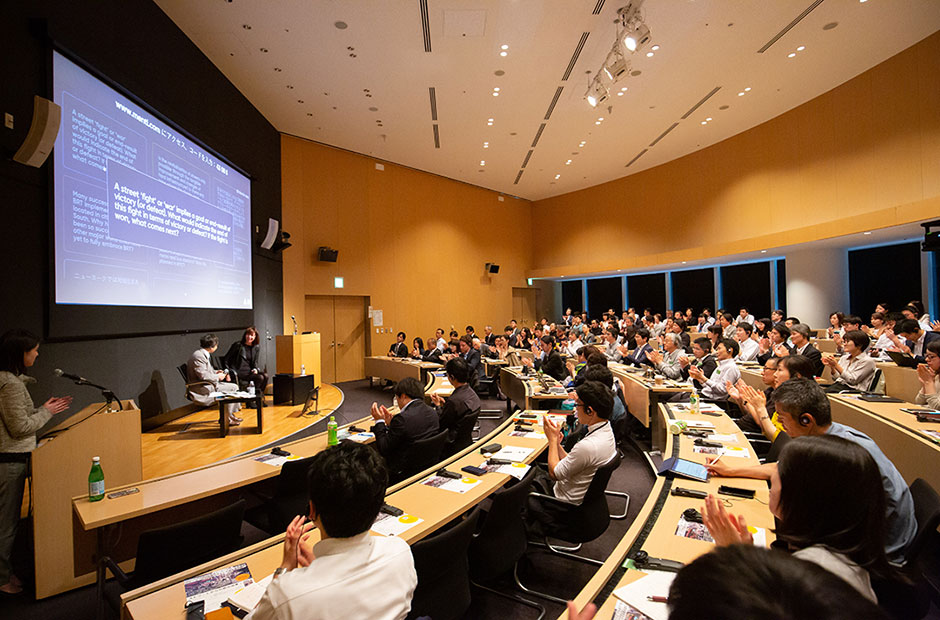Professor, Teikyo University /
Executive Director, The Mori Memorial Foundation
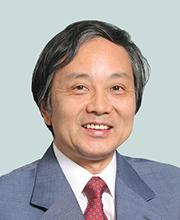
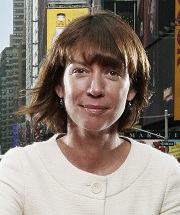
So, we are here to talk about streetfights. In New York City, we had a lot of fights over this infrastructure. We had 10,000 kilometers of streets,12,000 signalized intersections, 789 bridges, the largest ferry systems in the United States, to fight over. All of that infrastructure was taken care of by the 4500 men and women at the New York City Department of Transportation, and they are the true heroes of this story because they are the ones that made it all happen.
For too many years, we designed our streets only looking at it as for cars. And yet while we think about our streets being designed for cars, only 35% of trips in New York City are made by car, 62% are made by people who take public transit, who walk or who bike, but for too often all of these people have been ignored in the design of our streets. Tokyo is also a city where only 16% of the trips are taken by car. This actually happened by design which makes it easier for cars to get around.
Our streets clearly are in need of an update. The closest thing we had, to this update was Mayor Bloomberg's "PlaNYC"* , long-range sustainability plan. Mike Bloomberg said how are we going to accommodate the million more people that were expected to move to New York City by 2030 and at the same time improve the quality of life for people in the city. In 6-1/2 years, we reclaimed 73 hectares of former road space and gave it back to people walking and biking and taking transit, and we learned some lessons along the way.
*
PlaNYC
PlaNYC was a strategic plan released by New York City Mayor Michael Bloomberg in 2007 to prepare the city for one million more residents, strengthen the economy, combat climate change, and enhance the quality of life for all New Yorkers. The plan brought together over 25 City agencies to work toward the vision of a greener, greater New York and significant progress was made towards the long-term goals over the following years. (Wikipedia)
Our very first plaza, an underutilized parking lot in Brooklyn, we turned it from a place to park to a place that people wanted to be.
Just painted literally the curbs and painted the green plaza for the grass and put up tables and chairs and just showed people what was possible.
Madison Square Park, where three lanes of traffic came together, was a really dangerous place to walk around. We created 6,000 square feet of space in this place.
This picture shows, the moment when we had just put the orange barrels out.
We hadn’t even started the project.
New Yorkers are so hungry for public space that they immediately used the space.
“Zoop” just like Star Trek, they came right there.
Today, this is one of the most successful public plazas in the city, and people prefer to sit in the plaza, in the street, rather than in the park next door because they love to feel the energy and the pulse of the city just being there in the middle of it all.
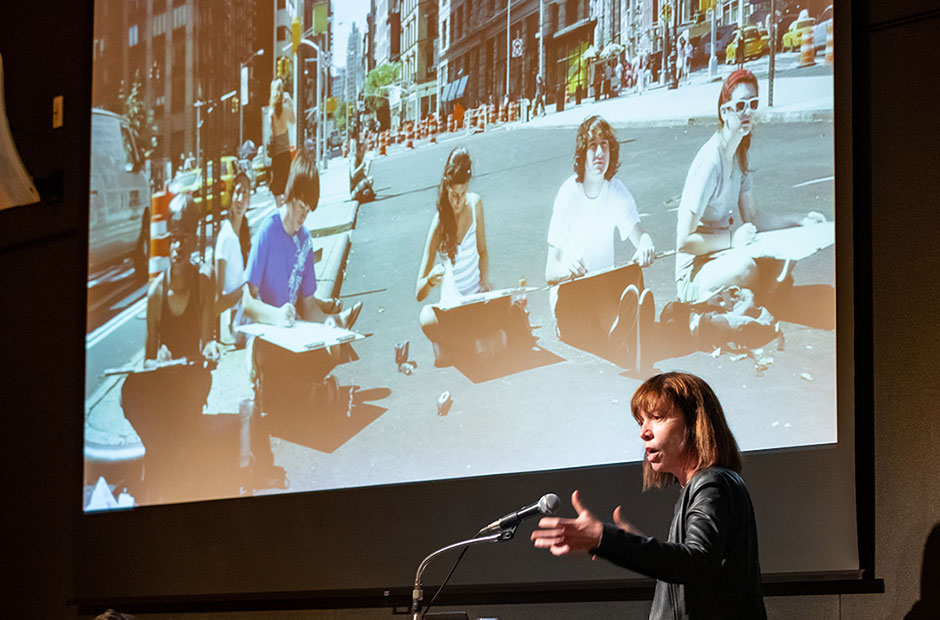
After we created this kind of showcase of projects, we took our toolkit to Times Square, the crossroads of the world.
We had 350,000 people going through here every day, but they had no space.
They only had 10% of the space.
It was kind of a math problem.
People had tried for years to fix it, nothing worked.
We brought this idea to Mike Bloomberg that we were going to close Broadway from 42nd to 47th street, close it to cars, and open it to people.
When I presented this to him, he said, “you’re crazy”.
I said, well we could do this as a pilot, let’s try it, and we’ll measure it to see if it works, and if it works, we keep it, and if it doesn't work, we will put it back to the way that it was, because it’s only paint.
I encourage all of you to think about it because when you do it in paint and not permanent materials, not only can you move fast, but it also reduces the anxiety that people feel about the change because they know that if it doesn't work, it's not permanent.
You can go back.
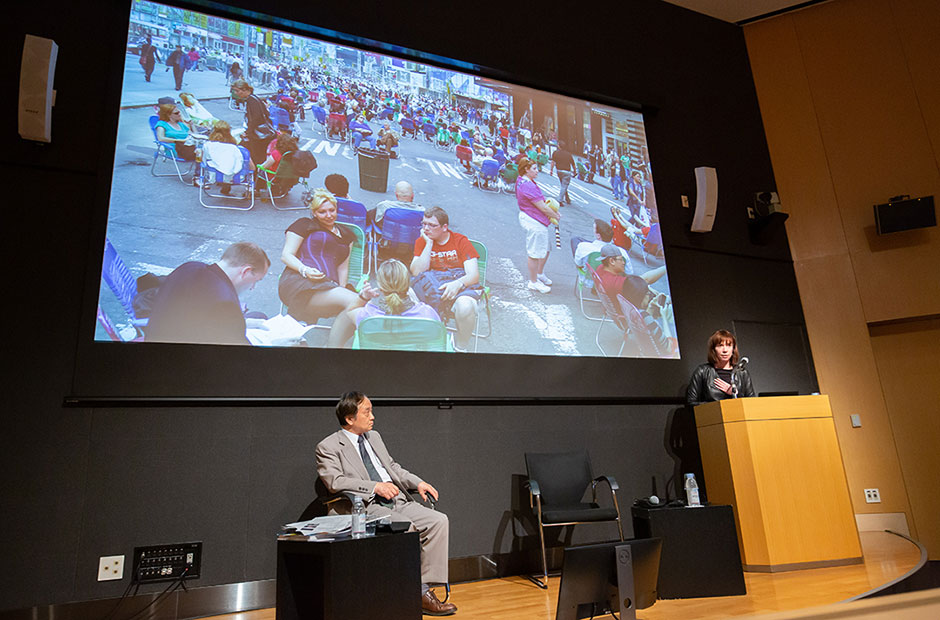
We closed Times Square to cars and opened 2-1/2 acres of new pedestrian space to the people.
Then we noticed, there was nothing there for the people.
So we went out and bought hundreds of beach chairs, and put them in the plaza.
All of you planners out there and all of you engineers, if you get into a problem with any of your projects, just think beach chairs.
It works like a charm.
We were able to see the change very quickly.
The travel times, safety benefits, environmental benefits, business benefits, improved.
Times Square became one of the top 10 retail locations in the world.
When you make it easier for people to walk around, to get around, to go in and out of stores, it's better for those businesses.
Cars don't shop.
People shop and you can see that in the numbers.
I work for a data-driven mayor. We brought lots and lots of data, and in addition to measuring vehicle travel times, we looked at the economic benefits, and safety benefits of our projects. When you look at the data, we found that retail sales for businesses along the corridors where we put in the protected bike lanes, they went up almost 50%. Very different. The data was really important because it turned some of our biggest opponents into some of our biggest supporters.
There's this big buzz about the new technology that’s going to change cities. If you ever googled “autonomous vehicles”, the scenes that come up are just people in cars, but there’s never any kind of depiction of anybody in the street. It seems like if you get driverless cars, you get people-less streets. We have to be careful that we don’t get so busy daydreaming about the technology that we drive into the same dead-end as we did in the last century because the bottom line is a driverless car is still a car, and you've probably seen this image.
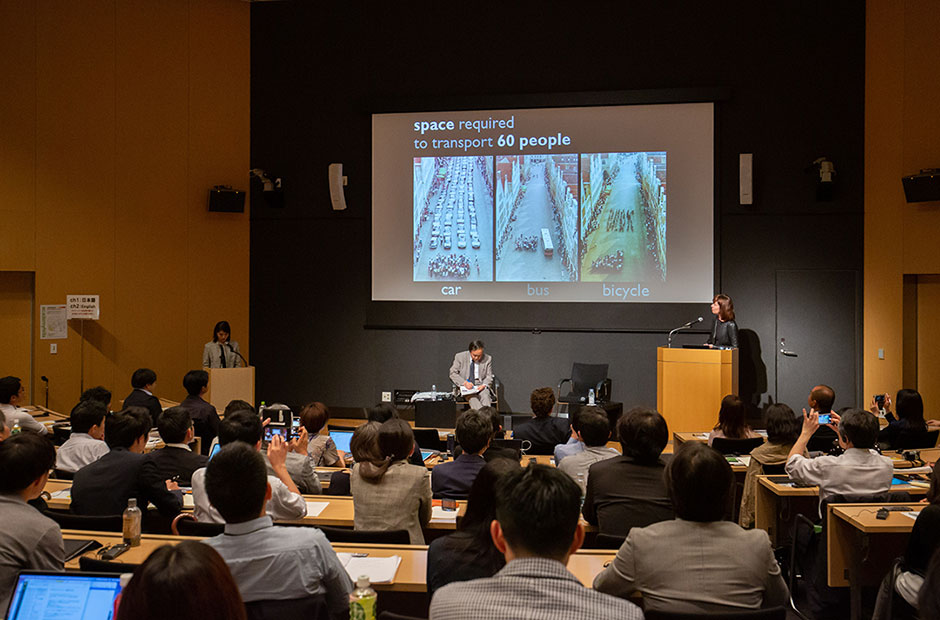
It’s about how much space 60 people in a car take up versus 60 people in a bus take up or the space 60 people on a bicycle take up (picture on above left). We have an updated version of this which shows that Autonomous Vehicles are not going to solve the problem if you just trade in your personal car for an autonomous car. You’re just changing the kind of car that you see on the street.
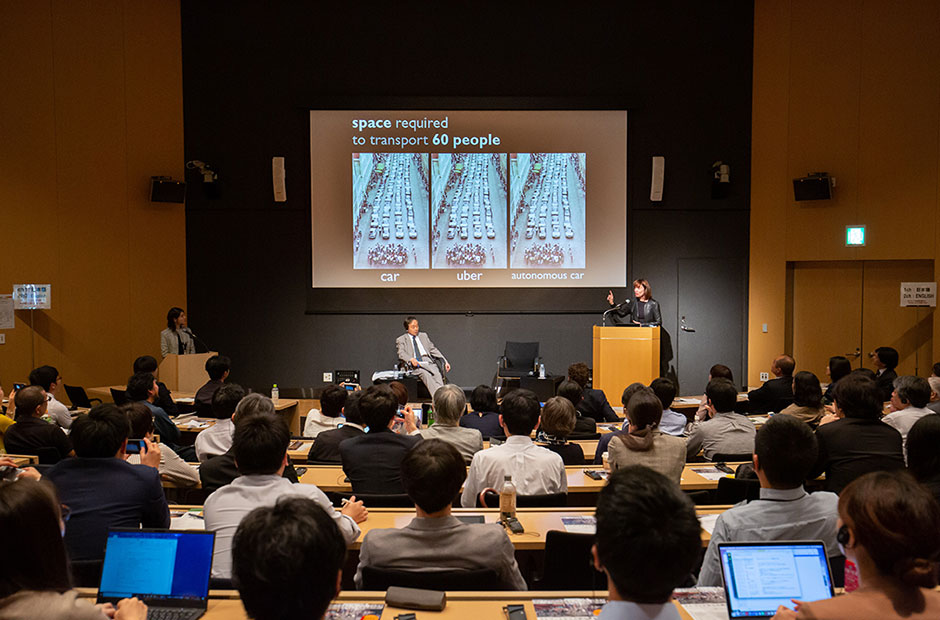
The point of shared driverless mobility isn’t to have better cars. It’s to have better cities, and we can’t be so preoccupied about the technology that we lose sight about the urban design fundamentals that are so important.
You can grab great ideas from everywhere and share them. Every city is different, but all cities face the same challenges. All of the ideas to improve the streets are captured in this “Global Street Design Guide”**. It's just about to be released in Japanese, and you can download it for free. It’s really about changing the hierarchy of our streets from one that puts cars and trucks at the top to one that puts people first, moving from cars to people. This guide has been adopted by 45 cities around the world, 45 organizations around the world. The Global Street Design Guide would be a great resource as you are updating your own national standards, and it provides this roadmap for transforming streets.
*
Global Street Design Guide
The Global Street Design Guide is a timely resource that will set a global baseline for designing streets and public spaces while redefining the role of streets in a rapidly urbanizing world.
Created with the input of 72 cities in 42 countries, this new manual presents 21 street typologies and 50 unique street and intersection transformations applicable worldwide.
We can build the future that we want to see on our streets because it is not a question of engineering. It is a question of imagination, and we know it's a fight to make space for people. It is a streetfight, but it is a fight that we can win and it's a fight that we must win, and when you change the street, you change the world.
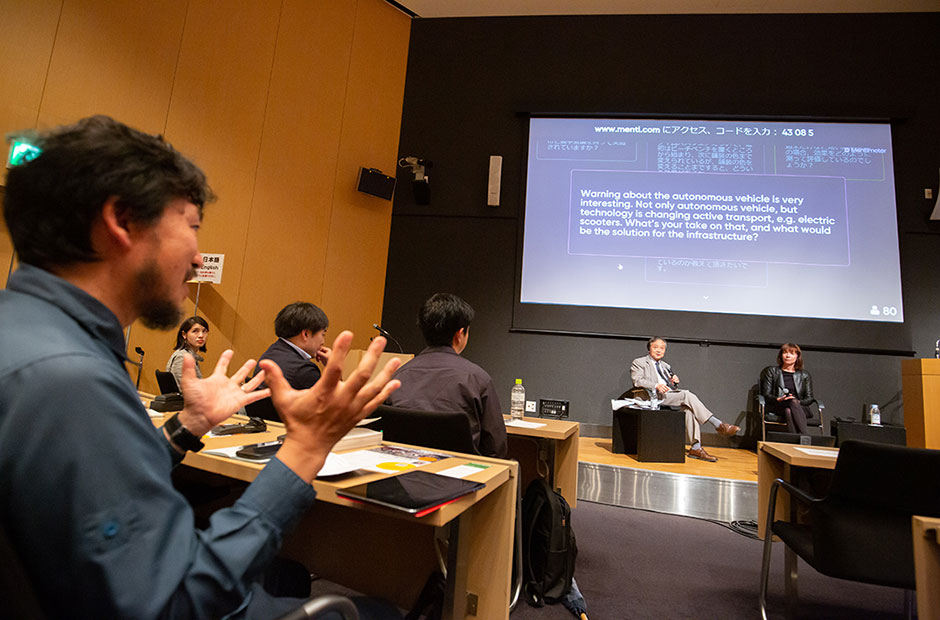
In Japan, it is very hard to change the mindset of the police. In NY how did you change the police force's mindset?
In any city you are, most of the time, the answer from the police is “no”.
What I did in New York, which was really key to the successes was Mike Bloomberg's approach about creating a unified vision for the city through PlaNYC and that vision was basically the roadmap for all of us.
We needed to work together to achieve those goals, and so it helped smash some of the infighting that could happen because we were all told to work together to get things done.
The other thing I did was, I would always brief the police chief first even before the mayor and I got his buy-in right off the bat.
So, I would never start a project without having the police commissioner know what we are going to do and that was really a big difference.
As the Mayor changed from Michael Bloomberg to the next mayor, and the commissioner of DOT has changed to a different person from Janette, does the DNA of your work still live on in NYC?
One of the things that we did was we turned our programs into application-based programs so that the public could apply for plazas or bike corrals or bike lanes or street seating, bus lanes.
Instead of the government pushing projects onto the public, the public was demanding them and it fundamentally changed the relationship that we had with communities.
At the end of the day, there was this huge demand for plazas and slow zones and bike lanes, and so it really didn't matter who was the commissioner or who was the mayor because the people were demanding these changes, and it would've created a huge uproar if the subsequent administration had not followed through.
Recently around the west coast, electric scooters are getting popular.
What do you think about this alternative mobility?
Compared to bicycles, since they are less space consuming, it might be a good option in Japan.
They’re illegal in New York City, and I think they are an interesting addition to the transportation mix, but much like Ubers and Lyfts, we need to be very careful about how we integrate these new services into the transportation network.
We've seen in cities what happens when you just throw down dockless mobilities.
I think it's really exciting to see what can happen with these new small mobility services, but you have to be very careful about ensuring that they are a positive and not a negative.
In the United States at least, a lot of cities are starting to ban them because they are not working well.
We are seeing a lot of new reports in hospitals for a lot of head injuries for people that are on a scooter for the first time.
We’re still at the first stage, of what these scooters will mean for the future of transportation in cities.
I think it’s hopeful, but we have to be careful about how we integrate them into the mix.
How do you cover the cost to reform the street spaces?
Will it be possible to get funding from retailers?
All of the interventions I talked about here were less than 1% of our capital budget.
When we did the plazas, we actually did work with the private sector, and so in New York City, we have business improvement districts (BIDs).
They were very key to maintaining these public spaces, and they did get huge benefits.
In areas where there were not enough local businesses to come together to make a business improvement district, we created a program where private sector sponsors would contribute money, and we would help the area maintain the space.
We also worked with formerly homeless people, trained them to take care of the spaces, and we also worked with people coming out of prison, and it was a way for them to get a new career and then move into something like the parks department or any kind of like the horticultural area.
So, there were lots of ways to bring new partners to the table to look after these new spaces.
When you conduct a field test, what kind of people do you involve?
Are there anything specific you do to make things move better?
And how long is the test conducted?
Great question.
Because the public process is key to everything, and when I started at DOT, the process was very broken.
People would ask for things that they wanted to see improved in their community, and they would write to the Department of Transportation, and the answer always from the Department of Transportation was “No.”.
I wanted to change that relationship.
-The first piece we did was, we created something called DOT Academy where we trained people about how we made decisions, and that also allowed us to show them what they could ask for.
We were encouraging people to ask for more than just the traditional pieces, and we explained how we made decisions, so they could understand the process.
-The second piece we did was we changed how we did our meetings with the public, and instead of just starting with, “Here’s a project that we want you to approve,” we started by going to the communities and asking them questions, “What's the problem that you're trying to solve?
By starting that way with the community, that starts a very different conversation.
Then when we come back with the project, we can frame it in terms of the problem that the community is trying to solve.
-The final piece was, in New York City when you have a big meeting, a lot of times we would sit at a big table and the department would present the project to all of you.
There would be someone who is like the loudest voice in the room, who would dominate the whole discussion.
Even though other people had very thoughtful comments to make, they would often be intimidated and not want to say anything.
So we did much more smaller table meetings, where people could express their opinion and discuss a project rather than this big formal process, which really eliminated many, many voices in the room.
The public process was very different from when we started than when we ended, and I think it was a reason why we were able to move so quickly to get projects done because we involved the public in a very different way.
There are some concerns that the increase of transportation network app services, such as Uber and Lyft, are causing traffic congestion.
What should the government do in relation to these services?
That’s a great question.
In New York City, we have 13,000 yellow cabs, and in 3 years, we added 80,000 new vehicles, Uber and Lyft.
Adding 80,000 vehicles are going to cause tremendous congestion.
One of the ideas, I was not in power then but, I would have capped the number of vehicles that you can put on your streets.
It’s also important to track where these vehicles go.
What tends to happen is, they tend to be in the central business district where they can pick up the most fares and not necessarily in areas that really need the transport.
The big part is getting Uber and Lyft to share data, which they don't want to do.
They had three big objections to share the data.
1. “We can’t share the data because we don't want to compromise the privacy of our riders.”
2. “We don’t want to share the data because it will give our competitors information that they can use against us.”
3. “We’re not going to give you the data because you wouldn't know what to do with it even if we gave it to you.”
What we did is we created a tool that basically filters the data and preserves the privacy of individuals which is called “SharedStreets ”* and so it's a way for the public sector to get the private sector data without compromising personally identifiable information.
So, there's no excuse not to provide the data.
This data is key because if we don't get that data as urban planners, as city planners, then we’re planning blind.
We don't know what's going on and this data is critical for us to better manage our streets.
So, getting access to the data and also capping the number of vehicles is key, so they don't overrun the streets of your city.
*
SharedStreets
SharedStreets is a shared digital language for the street which is powered by open source software, digital infrastructure and governance frameworks which enables public-private collaboration and seamless exchange of transport data.
